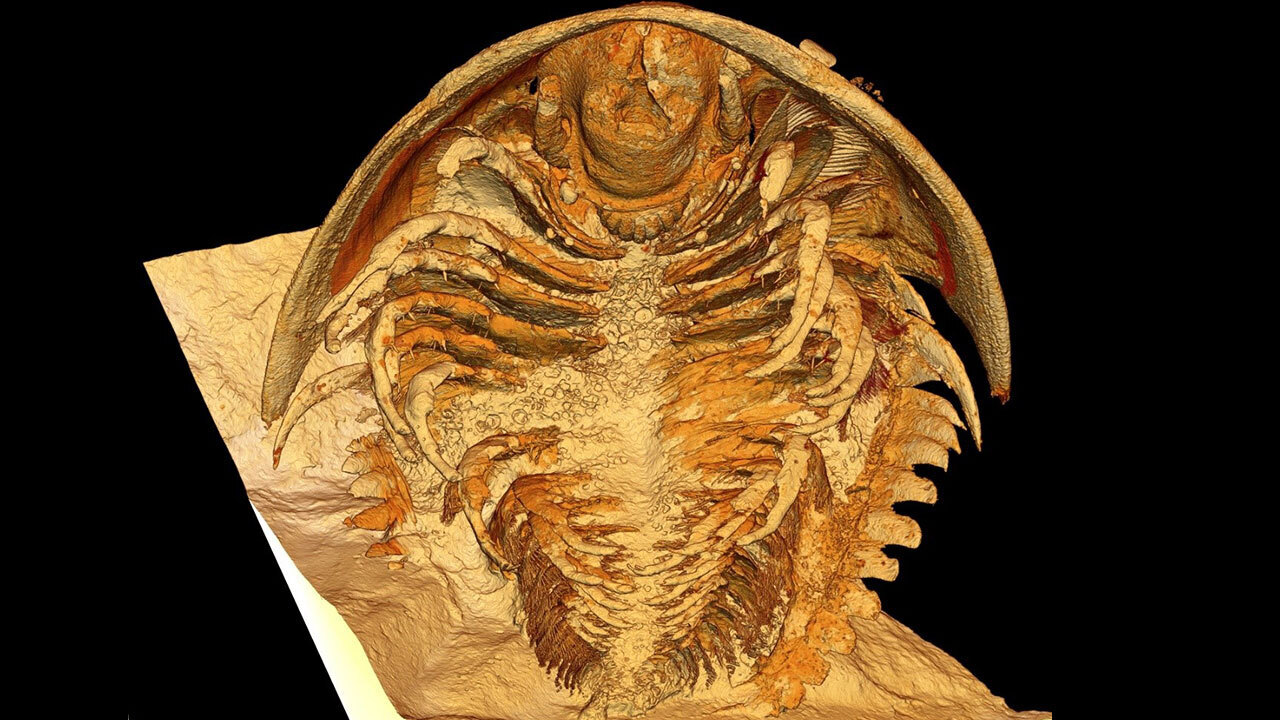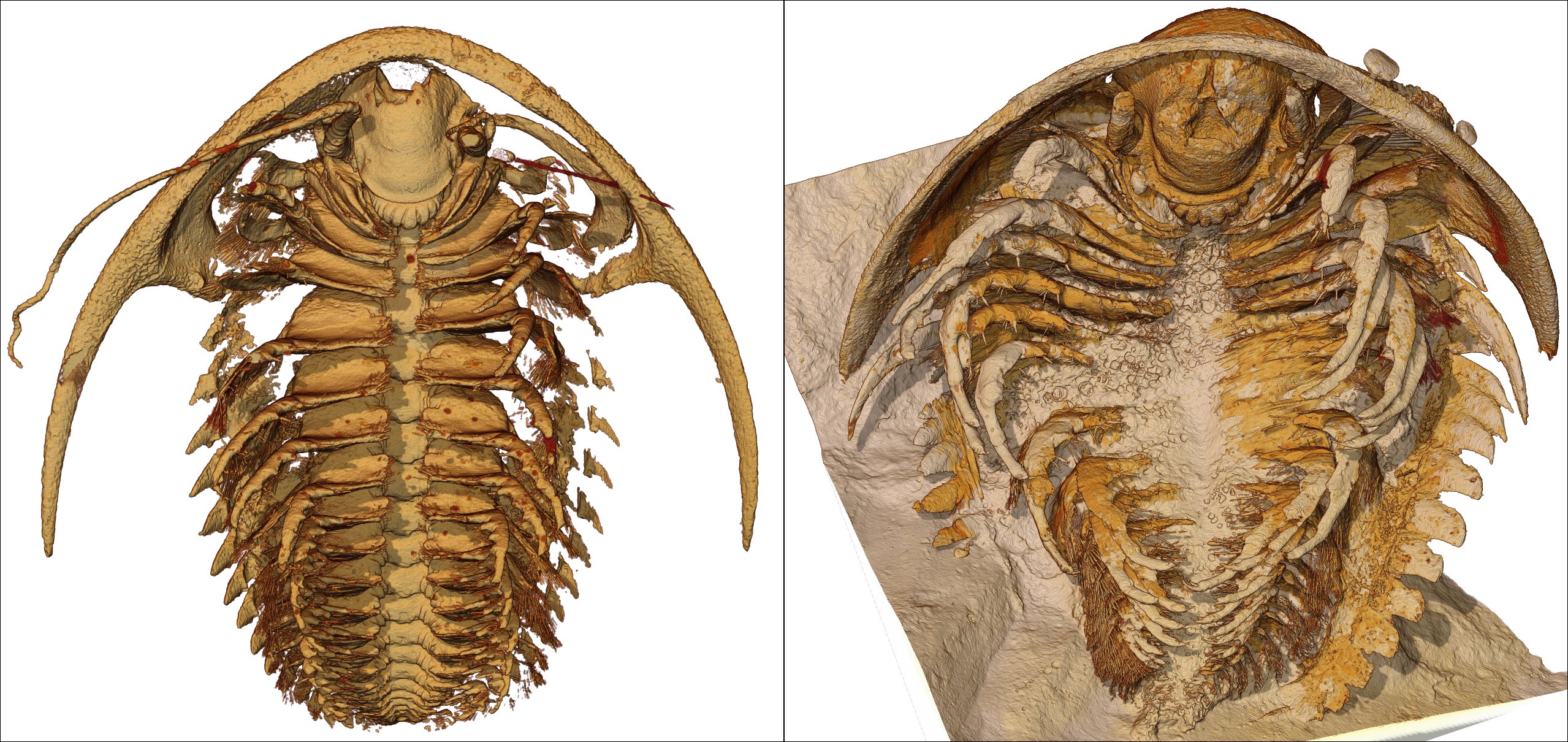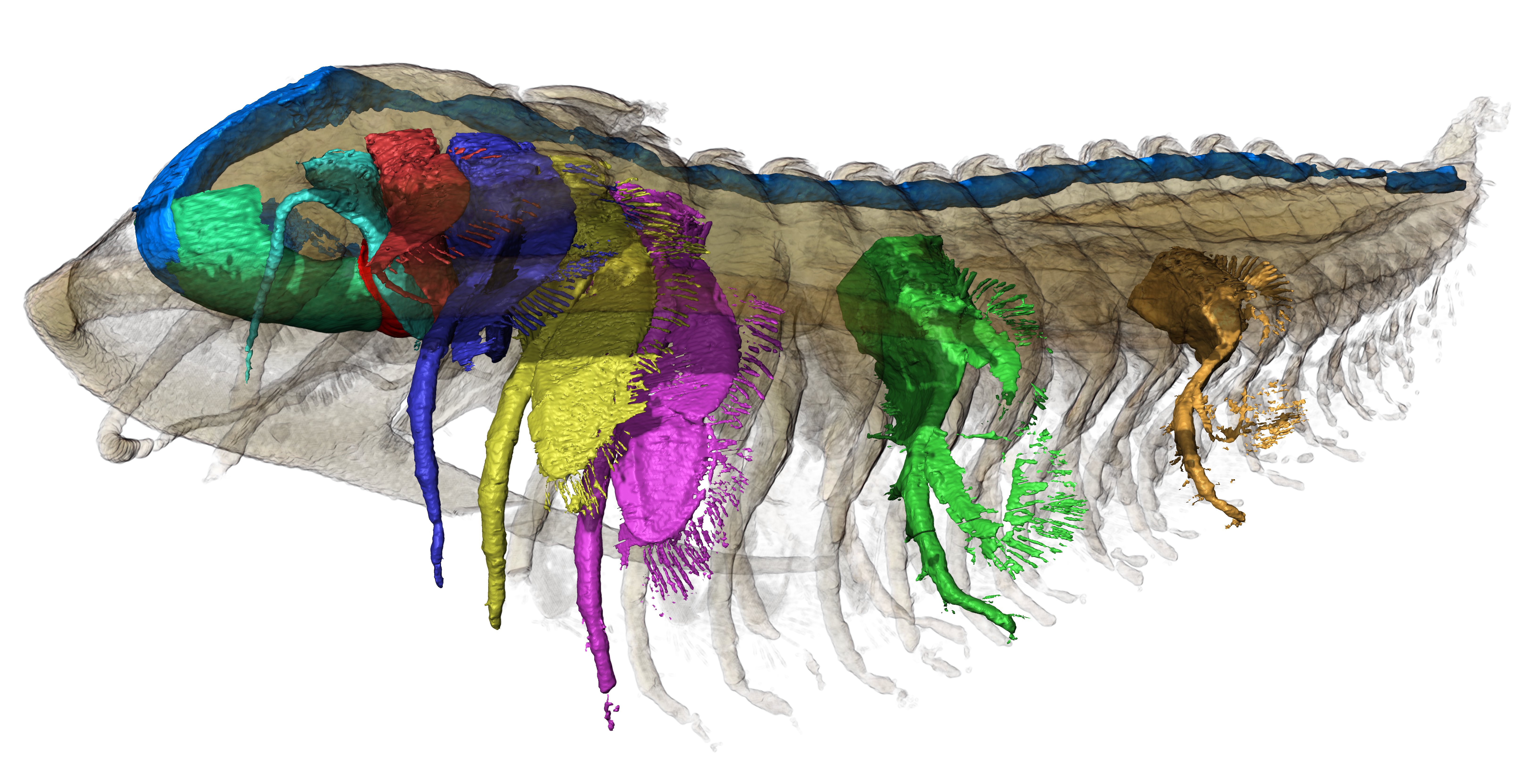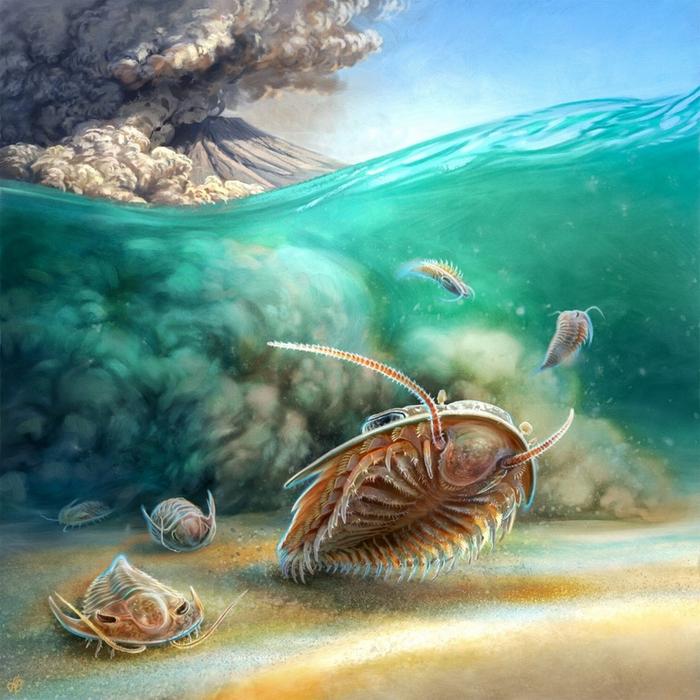Stunning 3D images show anatomy of 500 million-year-old Cambrian trilobites entombed in volcanic ash
Scientists used 3D imaging to reconstruct the anatomy of Cambrian trilobites discovered buried under layers of volcanic ash.

Scientists have revealed the most anatomically complete specimens of Cambrian trilobites ever found in stunning 3D images.
The pristine fossils, which date to the Cambrian period (541 million to 485 million years ago), were found in 2015 entombed under layers of volcanic ash from the Cambrian Tatelt Formation in Morocco. This volcanic burial preserved even the animals' soft tissue, revealing anatomic features never observed before.
"These new specimens not only preserve the antennae and walking legs, but also mouth structures and even the entire digestive system in three dimensions (3D)," John Paterson, paleontologist from the University of New England and corresponding author of the study, told Live science in an email.
The researchers unearthed two species of trilobites at the site — Protolenus (Hupeolenus) sp. and Gigoutella mauretanica, dating back to 509 million years ago.

To examine the long-extinct arthropods, the scientists used X-ray microtomography — an imaging technique used to view the inside of an object slice by slice — to piece together a virtual 3D model.
These models captured "the finest details including the outer surface of the animals, each segment of their bodies, their legs, and even the hair-like structures along their appendages," Abderrazzak El Albani, a sedimentologist at the University of Poitiers lead author of the study, told Live Science in an email.
Sign up for the Live Science daily newsletter now
Get the world’s most fascinating discoveries delivered straight to your inbox.
The stunning preservation and high-quality 3D images enabled scientists to observe parts of trilobites that had never been seen before, such as mouth structures of Protolenus (Hupeolenus) sp., including "a fleshy lobe covering the mouth, called a labrum, which was documented for the first time in trilobites" Albani said.
The trilobites were kept in such good condition for half a billion years thanks to volcanic ash from an ancient eruption that buried the creatures in a way similar to how Pompeii was preserved after the A.D. 79 eruption of Mount Vesuvius.

"As volcanic ash is so fine grained, not unlike talcum powder, it can mold the tiniest anatomical features on the external surface of these animals, right down to the bristles on the walking legs," Paterson said.
"This, coupled with rapid burial, allowed for the amazing 3D details to be preserved in these trilobites," Paterson added.

The volcanic ash also helped preserve the animals' insides. In the case of the specimen with its entire digestive system intact, the hapless trilobite likely ingested ash in the water before it died, which stopped the soft tissues from degrading, according to the study, published Thursday (June 27) in the journal Science.
Trilobite fossils are found all over the world and are easily recognized by their segmented bodies made of hard exoskeleton. This hard exterior is often well preserved in fossils, which has enabled scientists to identify 22,000 trilobite species spanning 298 million years across the Palezoic era, according to the study.

Elise studied marine biology at the University of Portsmouth in the U.K. She has worked as a freelance journalist focusing on the aquatic realm. Elise is working with Live Science through Future Academy, a program to train future journalists on best practices in the field.
What was the fastest dinosaur?
'Hell ant' with scythe-like jaws may be oldest ant fossil ever discovered









